Osteochondrosis, as the most common disease of the spine, occurs today in people of completely different ages, although not long ago that it was only considered age -related disease.This is characterized by the incidence of degenerative-dynist changes in intervertebral discs, which leads to pain and creates prerequisites for protrusions and intervertebral hernia.The disease can affect any part of the spine, although osteocondrosis of the chest region is extremely rare.This causes significant difficulties with the diagnosis as the symptoms of the disease imitate the pathologies of the cardiovascular system.However, if a diagnosis is made, it is important to start treating the chest osteochondrosis immediately.Otherwise, it can cause extremely serious complications and loss of performance.
A medical expert opinion
"Because there are quite a lot of nerve endings in intervertebral discs, any change in the structure leads to the brain to transfer the right signs, which results in pain in the affected area."
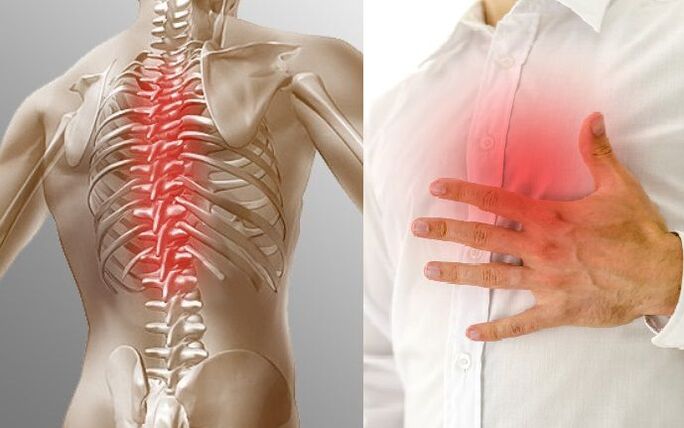
What is chest osteochondrosis and treatment features
Chest spine osteochondrosis occurs in less than 10% of the number of cases diagnosed with the disease.This is due to low mobility of the chest spine.But this is the main misleading of chest osteochondrosis, as its symptoms are in many ways reminiscent of signs of cardiovascular disease.Therefore, patients often consult a cardiologist or other specialist and take part in treatment courses that do not result, but eventually see a neurologist when the disease has progressed.
The chest spine has 12 vertebrae.Among them are intervertebral plates, but more often the first and last spinal movement of the class is affected by osteochondrosis.
In the future, the situation may become complicated by compressing the spinal roots, which will exit the spinal cord at the level of each vertebrae and are responsible for controlling the function of the lung function, the internal organ of the abdominal cavity and the pelvis.As a result, there will be signs of dysfunction and pain on the ribs, called radicular syndrome.
Generally, chest osteochondrosis can be manifested:
- pain in blades, which increases with deep inspiration;
- pain behind the sternum in the heart area;
- The occurrence of cough, shortness of breath, bronchitis, bronchial asthma, pneumonia and other diseases of the lungs and bronchi;
- The pain of the right hypochondrium derived from the interruption of the liver, the gallbladder and its channels, which are cholecystitis, metabolic disorders, etc.There may be a reason for its development;
- pain in the left hypocondrium or belt is due to the dysfunction of the pancreas, which increases the risk of developing diabetes;
- decreased immunity, the incidence of allergic reactions due to suppressing the innervation of adrenal glands;
- urinary tract disorders of kidney failure and infectious diseases, especially pyelonephritis;
- Female and male genital disorders, including infertility.
In this case, severe pain causes reflex tension in the back muscles, which causes discomfort and increases the risk of pinching nerve structures.
The risk of changes in the functioning of internal organs increases suddenly in later stages of chest osteochondrosis, when the protrusion of intervertebral discs is already observed, ie the formation of protrusions and invertebrate hernia.In such situations, pathological protrusion compresses nerve roots, which cause disorders in the innervation of the appropriate internal organs and the development of their diseases.
So, although chest osteochondrosis is quite a rare disease, it can affect the functioning of the whole body.Therefore, it requires an immediate start of comprehensive treatment.To do this, contact a neurologist who assesses the patient's condition, examines the available test results and develops the individual treatment program.It depends largely on the degree of chest osteochondrosis (there are 4 stages, the simplest of which is the first), but also on the nature of the disease manifestations, the type of disease, age and many other factors.This is the reason why the treatment of patients with the same degenerative changes in the discs can lead to significant differences.
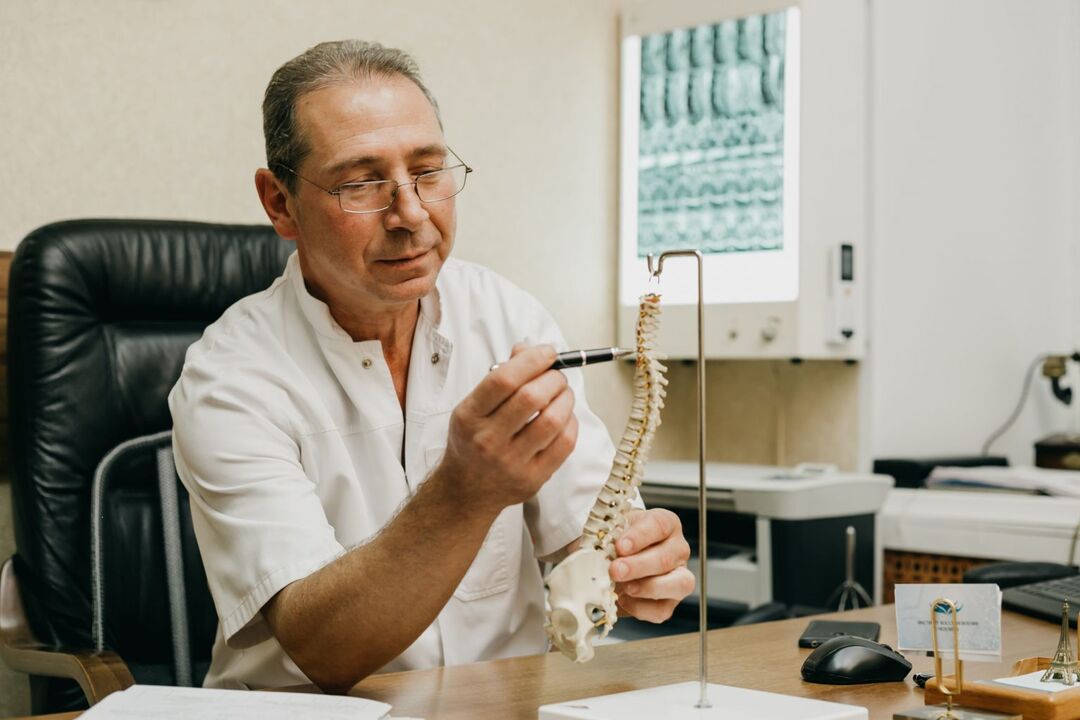
Treatment of chest osteochondrosis is always complex.Aim to solve the following problems:
- Eliminating the unpleasant symptoms of the disease that improves the patient's quality of life and restores complete functionality;
- Improve the quality of blood circulation in the affected area that activates metabolism processes and facilitates regeneration processes in the disc;
- eliminating the causes of osteochondrosis;
- Reducing the likelihood of complications of the disease.
Patients can be prescribed for this:
- lifestyle correction;
- medication;
- exercise therapy;
- Manual therapy;
- towing therapy;
- Physiotherapy treatment.
Which specific methods are recommended to the patient, determined by the attending physician, depending on the severity of the degenerative-dynist change of the spine.So, if the chest osteochondrosis is diagnosed in phase 1 of development, which is unfortunately quite rare, usually sufficient to restrict certain adaptations of lifestyle, exercise and manual therapy.
But if the disease goes to the 2nd and especially the third stage, we definitely recommend additional medication, traction therapy, etc.In addition, if osteochondrosis has already provoked the formation of intervertebral hernia, it is accompanied by the large and severe radicular syndrome, which cannot be eliminated by conservative methods, the patient's condition can only be achieved using the operation.
Thus, in the case of similar lesions in the chest osteochondrosis and other parts of the spine, the purpose of the treatment is to stop further progress between degenerative changes between the vertebrae and improve the patient's well -being.For existing, especially large lesions, it is not yet possible to fully restore cartilage tissue, not only intervertebral discs but also other joints.So let's look at the main methods of treating chest osteochondrosis and their characteristics.
Lifestyle
After diagnosing chest osteochondrosis, your doctor will necessarily recommend some changes to your normal lifestyle.If you show signs of excessive weight to a patient, we recommend that you reduce it.But the diet for weight loss, especially the monocomponents, is contraindicated.Nutrition should be complete and diverse for the body to receive all the substances needed for proper functioning, and the metabolism processes continue to be properly continued in intervertebral discs.Therefore, the principles of rational nutrition should be as fully as possible.
We also recommend that all patients increase their physical activity, especially those who live a sedentary lifestyle.It can be a daily walk, swimming, yoga or pilates.But serious physical activity, especially simulators, intensive training, jumping sports and weight lifting are contraindicated.
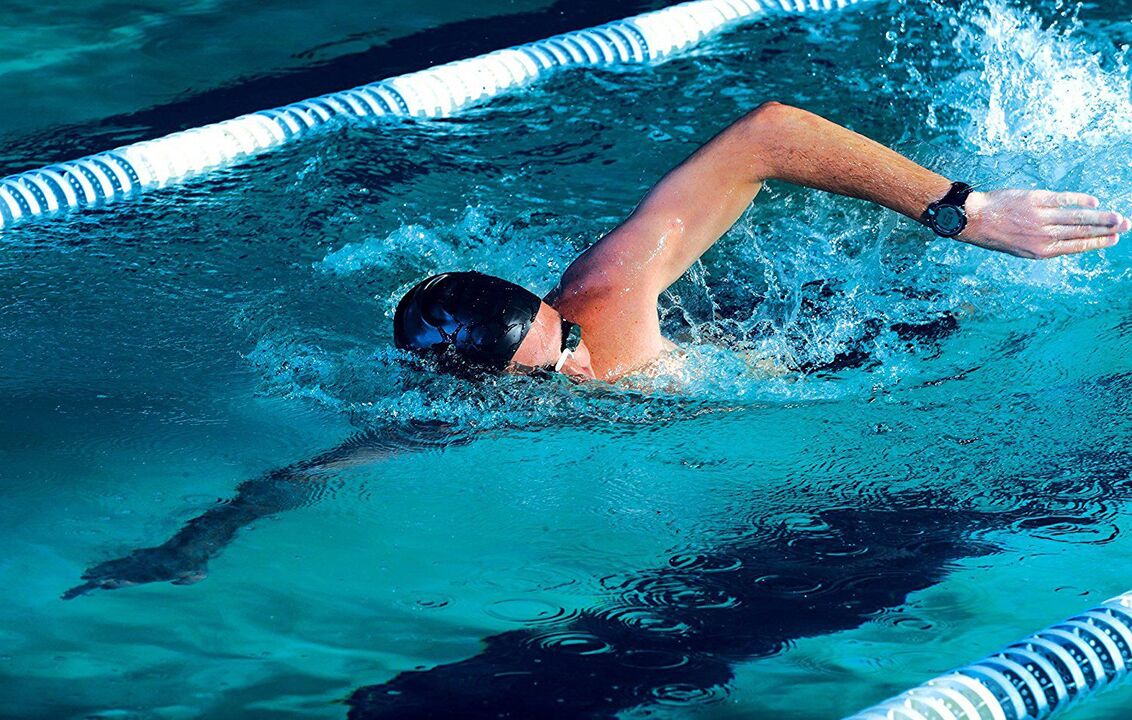
If the patient's profession is difficult to work, such as difficult raising, it is advisable to try to change.The reason for this is that, in the presence of osteochondrosis, increased loads on the back may play a role in rapid progress in degenerative changes in discs.
Absolutely all patients with osteochondrosis of the chest are recommended that the mattress become a medium -haired orthopedic and buy an orthopedic pillow.This ensures that the physiological curves of the spine remain and prevent further degeneration of the disc.
Medication for the chest osteochondrosis
In the treatment of osteochondrosis, patients are usually prescribed a drug complex.Some are recommended only occasionally, especially during the worsening of the disease, while others should be used in courses, the duration of which is chosen by the doctor.
When prescribing specific drugs, the neurologist should know that the patient has a simultaneous disease and nature.This is necessary to exclude the contraindications needed to take each medicine.
In general, the following groups of drugs can be prescribed for chest osteochondrosis:
- Nsids;
- corticosteroids;
- muscle lakes;
- vitamins;
- chondroprotectors;
- Products for topical use;
- It means improving microcirculation.
NSAIDS
Non -steroidal anti -inflammatory drugs are one of the widest groups of drugs, as these indications have a huge list that includes chest osteochondrosis.They have anti -inflammatory and analgesic properties and are therefore indicated because of the worsening of the disease and the occurrence of pain.
Nowadays, there are four generations of NSAIDs, the latest 4th generation drugs are considered to be the safest and most effective.They are distinguished by their selective effects and virtually no negative effects on the stomach and duodenum mucosal membranes.However, previous drugs should not be used in this group, especially for a long time in the presence of stomach and duodenum in the presence of stomach inflammation and peptic ulcers, as they can cause aggravation.
NSAIDs are available in almost every possible form of dosage, which allows the medication to be selected according to the method of use.Therefore, in the early stages of chest osteochondrosis, the use of ointments, gels or creams is indicated.For more severe pain, the capsules or tablets are preferred, and if there is no effect, the intramuscular injection of the drugs is permitted.
Corticosteroids
In this group, the drugs belong to the hormonal group and contain synthetic analogues of adrenal hormones.Therefore, they have a strong anti -inflammatory effect and are indicated by severe inflammatory processes.But since it can cause many negative side effects, it is usually prescribed in the form of injection solutions and only in short courses.
In addition, corticosteroids are used in combination with local anesthetics to implement paravebral blocks.These are indicated by very severe pain, which deprives people of their ability to work, but can only be performed in a medical institution.Blockades also help to rapidly relieve very severe pain, and the introduction of a prepared solution consists of points in the immediate vicinity of the spine, where the spine's roots pass.
We recommend that you perform such procedures up to four times a year.
Muscular
Muscle loosers are a group of drugs aimed at alleviating muscle cramps.Keep in mind that they often act as a reflex reaction of the body.Therefore, the use of muscle relaxes promotes the severity of chest osteochondrosis.
Vitamins
In the treatment of chest osteochondrosis, vitamin complexes containing vitamin B can also be prescribed.This is necessary to improve the passage of bioelectric impulses along the nerves, which is particularly important for radicular syndrome.In this way, we prevent intervertebral disks from the spinal roots of the intervertebral discs at the level of injury.
Chondropotectors
Condroprotectors are a relatively new group of drugs that are actively prescribed for chest osteochondrosis.As an active ingredient, they primarily contain compounds that are completely natural for the human body and are used to regenerate intervertebral discs and other cartilage.
However, there is still no convincing evidence that the effectiveness of drugs from this group in the advanced forms of osteochondrosis, although they work quite well in the initial stages.At the same time, the natural origin of chondroprotectors ensures high levels of safety.
These drugs are available in various forms, including capsules, local preparations, powders and injection solutions.The best result is observed by administering chondroprotectors.But despite all the positive aspects of the drugs, they are characterized by high costs in this group, which, together with the need to use it in a course of at least 30 days, is not available to everyone.
Current products
In addition to ointment, creams and gels, which contain NSAIDs and chondroprotectors, treatment of chest osteochondrosis may include the use of heating and local irritants.The basic principle of their operation is based on irritation of skin receptors at the site of application.This leads to active blood flow in the application area and therefore to the inflow of nutrients.As a result, the quality of the nutrition of intervertebral discs improves and the pain is reduced.
Products to improve microcirculation
In this group, drugs are also used to improve the quality of blood circulation and to activate metabolism processes.
Practice therapy
Therapeutic physical education plays one leading role in the treatment of chest osteochondrosis as it allows:
- Confirm the muscle lining that provides high quality support for the spine;
- normalizes muscle tone;
- Activates blood circulation, which improves the course of metabolic processes in affected intervertebral discs.
However, patients need to understand that the use of general practices can negatively affect the course of the disease and well -being, as they do not take into account individual characteristics, osteochondrosis and existing simultaneous diseases.Therefore, to treat the thoracic osteochondrosis, an individual exercise should be developed on an individual basis.
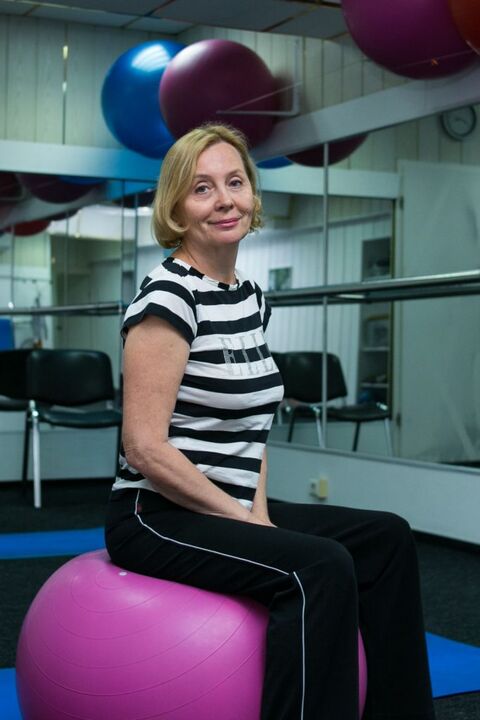
Initially, in order for the patient to acquire the correct exercise technique, it is recommended to exercise under the supervision of a training therapy instructor.You will be able to correctly calculate the load in line with the level of physical development of a person and set your movements so that the exercises performed have a maximum advantage.The program gradually becomes more complicated and, after being fully mastered, the patient can practice at home.But in order for the classes to achieve good results, they must be done daily.
When performing all therapeutic exercises, it is important to avoid sudden movements.
Manual therapy for chest osteochondrosis
Manual therapy is one of the most effective ways to treat chest osteochondrosis, as it not only allows the muscles to be well developed but also involves influence the spine.Thus, it differs from therapeutic massage, which is also very useful for osteochondrosis, but cannot have the same effect as manual therapy as it does not include the spine.
In order for manual therapy to have only the benefits, you should be careful when choosing a specialist because the effect on the spine should be done with accurate accuracy.Otherwise, the risk of complications is high.
Manual therapeutic activities begin with stroking and relaxing the muscles.The doctor works well in all areas of the back, eliminates cramps and prepares soft tissues for a more active effect.He then begins to use mobilization and manipulation techniques, which can sometimes be accompanied by minor discomfort and crunch.
The method of manual therapy, which is distinguished by the use of special techniques that have proven to be one of the most effective in 20 years, deserves special attention.These allow not only a beneficial effect on the affected intervertebral plates, but also to improve the quality of all internal organs, as, as mentioned above, they have close contact with the spine.
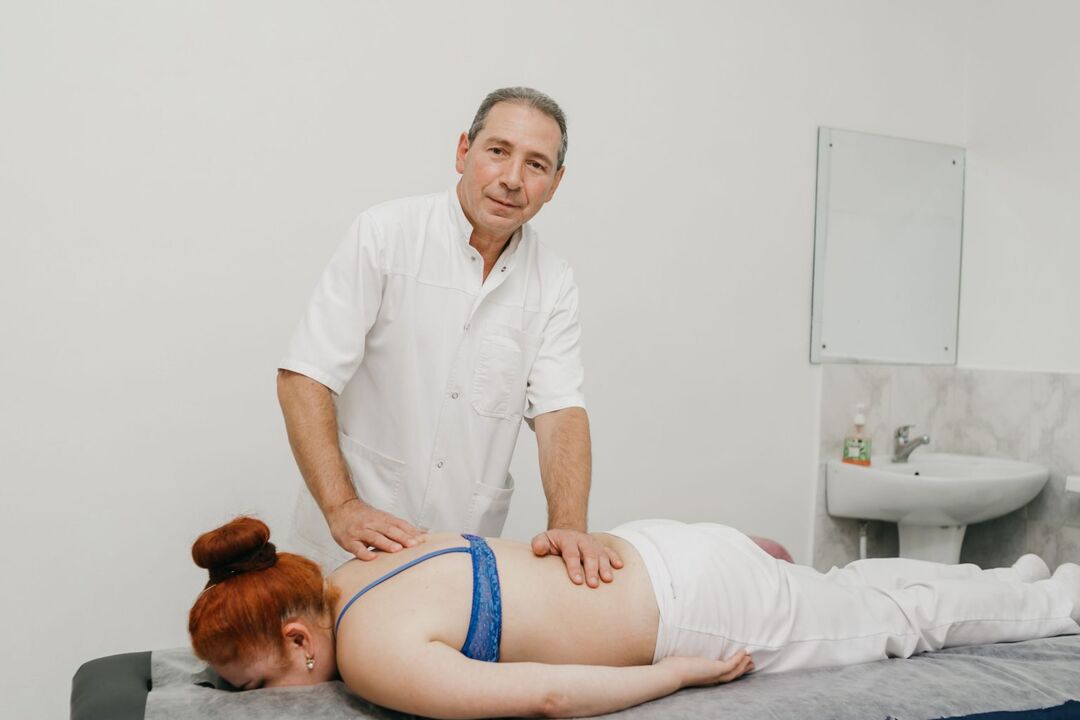
In general, manual therapeutic sessions provide the following:
- restoration of the correct anatomy of the spine by returning the vertebrae to their designated location;
- increasing the distance between spinal bodies, which has a beneficial effect on the condition of the intervertebral discs by reducing the pressure on them;
- Normalization of muscle tone;
- Eliminating functional blocks;
- Improving the function of the lungs, bronchi, heart and stomach tract;
- Increasing immunity and reducing exposure to allergens.
At the same time, observe the improvement of prosperity after the first seat.Subsequently, patients take into account the gradual decrease in pain and the improvement of the overall condition, increased performance and mood.
Physiotherapy
Physiotherapy methods are widely used to treat chest osteochondrosis after completing the acute stage of the inflammatory process.They can further reduce the severity of the back discomfort and have many other positive effects on the body.
Most often for chest osteochondrosis, the following are prescribed:
- Electrophoresis with the introduction of drugs - this method allows deeper penetration of drug components into the tissues and improves their therapeutic effect using weak electricity;
- Magnetic therapy is a method of physiotherapeutic treatment based on the beneficial effects of the magnetic field, which promotes blood circulation stimulation in the area of influence, which leads to the activation of metabolism processes, to reduce pain and swelling;
- Laser therapy is a method that allows for a highlighted anti -inflammatory and vasodilator effect, which results in an improvement in the condition of intervertebral discs and a reduction in pain;
- Ultrasound therapy is a physiotherapy procedure that has an anti -inflammatory and analgesic effect;
- Diadynamic currents are an effective method of physical influence, which reduces the severity of pain, the increase in metabolism and the improvement of muscle tissue.
As a general rule, physiotherapy procedures are prescribed on 10-15 courses.But each has its own contraindication, which must be taken into account when selecting a specific type of exposure.
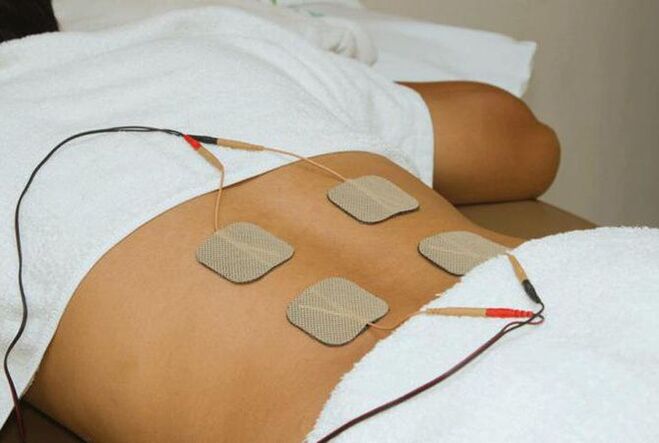
Traction therapy
Towing therapy allows for increasing the distance between the vertebrae, which reduces pressure between the vertebrae affected by osteochondrosis.This stops the progress of the disease and creates optimal conditions to restore cartilage tissue.Towing therapy or spine traction is performed on a special table under the supervision of health professionals.
Thus, although chest osteochondrosis is not a common disease, it can significantly reduce the quality of life of a person and lead to the development of pathologies of many internal organs.At the same time, the difficulty of diagnosis works against the patient because, without proper treatment, degenerative changes in intervertebral discs continue to worsen.As a result, complications often develop in such situations, including the development of protrusions and vertebrae.Therefore, it is important that you do not ignore changes in prosperity and consult a doctor immediately and strictly follow the recommendations you receive when diagnosing chest osteochondrosis.



















